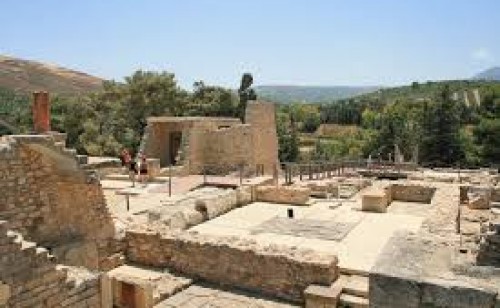The Minoan Palace at Knossos is over 20,000 square meters and the largest of all Minoan palatial structures. It was built of ashlar blocks, had many floors and was decorated with really beautiful frescoes. The old palace was built around 2,000 BC but was destroyed by an earthquake in 1700 BC. The newer, more complex palace, was built almost immediately after the first one was destroyed. In the middle of the 15th Century BC, the Achaeans took over the island of Crete and settled in the palace.
The palace was once again destroyed by fire in the middle of the 14th Century B.C and henceforth ceased to function as a palatial centre. The first excavations that brought to light parts of the palace were carried out by Minos Kalokairinos, a Cretan merchant and antiquarian in 1878. Several other people attempted to continue the excavations including W.J Stillman, the American Consul in Greece, M Joubin, a French archaeologist and Arthur Evans, director of the Ashmolean Museum in Oxford. However, they all had to abandon their efforts as they were unwilling to purchase the area at the extremely high prices that the owners asked for it. Eventually in 1898, when Crete became an independent state, all the antiquities of the island became state property and in 1900, excavations on the site started under the supervision of Arthur Evans.


 English
English Greek
Greek Russian
Russian





